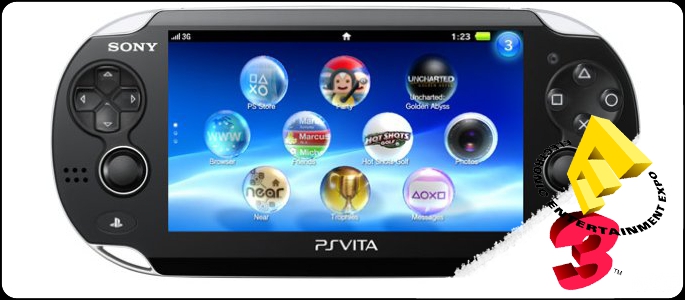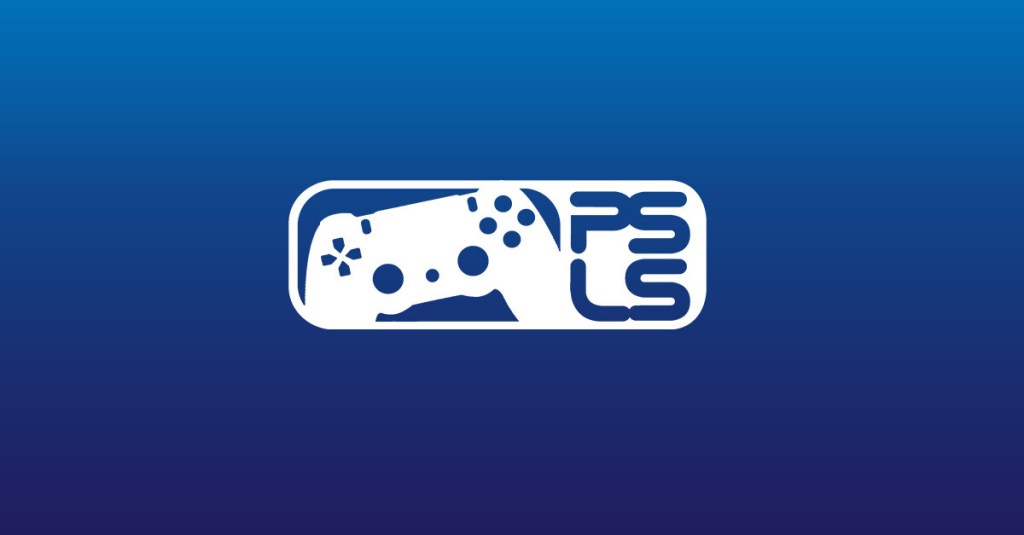
On an abnormally sunny yet cool June day in Southern California, a massive collection of journalists from around the world had gathered. Sony was hosting its annual E3 press conference. But this year, the event was being hosted at the Los Angeles Memorial Sports Arena, a massive complex compared to the more intimate affair at the Shrine Auditorium, where the press conference had normally been held. After a relatively brief holding period, the doors opened and the press began to pour into the stadium. Jack Tretton took to the stage, and, well, you can read our play-by-play over on our Facebook page and read a recap of the news right here. After the conference, the stage opened up to reveal a showfloor filled with mostly PS3 booths alongside 20 or so NGP Vita booths. A few PSLS correspondents braved a seemingly never-ending line to get their hands on the PS Vita. After approximately one hour of waiting we had finally arrived – to the end of the actual, original line! Allen Tyson and Paulmichael Contreras have their hands-on take after the break.
LittleBigPlanet
Paulmichael (PmC): LittleBigPlanet was easily the most impressive demo I played that night. The controls were just as tight as on the PS3 version, and much more fluid than the PSP version. The graphics also did not disappoint. This demo used touch controls quite well – you can move anything with a star on it with your fingers on the front touch screen. The back touchscreen proved the most intuitive use, where you popped out pieces of material shaped like tetris pieces in order to advance to the next level.
Allen Tyson (Allen):
Playing LittleBigPlanet on the NGP, I walked away impressed, and much more confident that Sony has the right “vision” of what do with their hardware. As I played through the first level, the graphics were crisp, the touch functionality was embedded within the game extremely well, and I found myself laughing as Sackboy progressed over the 4 minutes I spent with the title. Nice touches such as, tapping the screen to play the piano, swiping to move objects and using the back touchpad to track your finger movements on screen was nice. Surprisingly, at no point did I feel “this is great, but it’s a handheld”. The experience mimicked that of PS3 version nearly 100%.
Virtua Tennis 4
Allen: After being somewhat critical of Virtua Tennis 4 in my review, playing Virtua Tennis 4 on the PSVita changes my view of where the franchise should go; even though none of the innovations were from Sega. It’s hard to imagine controlling VT with swipes and touches, but that’s exactly what you do—and it works. The control scheme is set where you touch different points on the screen where the ball is (or where you anticipate it to be) and your player moves to that spot and reacts. It’s not a “touch and watch” type affair because you actually have to anticipate correctly or you miss the shot. Another nice addition is that of a type of “Super Shot” that is performed by two swipes forward after you position your player. The back touch pad will eventually be used according to the rep I spoke with, but it wasn’t available at this time. One of the most innovative features that will be in the final version according the rep is a sort of dual player. In essence, the screen will be turned sideways, with each player using one half of the touch screen (along with analog stick) to play against each other.
PmC: Virtua Tennis 4 was a great example of the kind of freedom of control we can expect to see in games on the PS Vita. While you can use nothing but touch controls, I felt the most comfortable using the left analog stick to move and the touch screen to hit the ball. Swiping controls are intuitive and responsive, including an essentially unstoppable super shot initiated by swiping with two fingers. Moving by touch works, but is most likely in place for those who are used to playing action games on their touchscreen-only smartphones. Being able to transition from stick to touch without having to access a pause menu option is a refreshing change of pace.
Little Deviants
PmC: Little Deviants is essentially a collection of minigames that showcases all the different input methods available to you on the Vita. The first was an Augmented Reality shooter, where different enemies are displayed overlayed on what the Vita’s rear camera is displaying. While applications such as this are available on smartphones, the result is usually slower-moving characters as the camera feed is prioritized over the game. Not the case here – everything runs silky smooth, and it is one for fans of the genre (yes, AR games can be called a genre now). There were a couple other minigames included here, for example the previously-seen demo where the back touch screen is used to shift land upwards in order to roll a ball to a goal. These were amusing at best, but the games seem more like glorified tech demos than anything truly substantial.
Allen: With both front and rear cameras, augmented reality is almost a given for the PS Vita—and that’s what Little Deviants is all about. Little Deviants is hard to describe. Imagine a collection of mini-games, utilizing the rear camera, where the axis functionality of the PS Vita is how you target your enemies before you shoot them out of the sky. While the game itself was, not the most impressive of the line up, It brought together nearly every element of the PS Vita—right down to wiping off the screen when slime accumulates. Given the price point of the console, Little Deviants may be the perfect killer app for the younger audience. If you’re looking for a pick up and play game, or something to sell the family on why the need a PS Vita, this is the title.
Sound Shapes
Allen: Sound Shapes is an interesting title. On the one hand, it has a nice soundtrack, takes advantage of the axis functionality, shows off the gorgeous OLED screen and was easy to play through. Level and movement progression was the key to unlocking the beats which was hard to do in a 4 minute timeframe. Of all the titles I played, this one had the most potential, but it’s just too hard to tell how it will be upon release with such a limited time playing it. Given the nature of the game, it might be better as a mini-game, but I could be totally wrong. At any rate, the PS Vita made a simple game graphically shine. I spent even less time with this one, as we were in the last group of the night. Time was adjusted to allow me more time with the big elephant in the room: Uncharted.
PmC: Sound Shapes, developed by the creator of popular PSN game Everyday Shooter, is a more traditional game at least with regard to the control scheme. You are a ball of sorts with sticky appendages that allow for gravity-defying platforming. As you traverse each level you collect these orbs that slowly but noticeably add to the audio on the current level. The controls were tight, and the audio was appealing. I was told (and it was shown on the PS Blog earlier) that the level creation mode utilizes the Vita’s front touch screen, but that was not demoed during my brief time with the game.
Uncharted: Golden Abyss
PmC: Uncharted: Golden Abyss is a definite treat to the eyes. The framerate was smooth, and controls were tight. I had a very limited amount of time with this game – I was unable to try a firefight. Touch controls essentially turn the game’s climbing sections to Drake on autopilot – it’s a nice touch for those looking for a different experience, but I do not see myself playing in that style versus regular controls. With such a short playtime on this demo, I cannot really say if it truly is the console experience on the go, but things are definitely looking very promising. Having said that, I do not really feel the touch controls are going to bring in any casual gamers – gunplay, a central motif in any Uncharted title, is still done via the same basic control scheme. While it remains familiar to core gamers, it will likely still be seen as complicated for the casual crowd.
Allen: The game that Sony’s been using to define what the PS Vita is capable of has been Uncharted: Golden Abyss. Let me start off by saying that, what we played is the same as the demo that you’ve already seen. If you’re like us, you’ve seen it a lot and probably watched the game play over and over again. Honestly, after all that, I’m still beyond impressed with how it all comes together after I finally played it. Graphically, the ability to swipe and pan around your environment, with no screen-tearing, and no pixel break up with the level of detail present will shock you. While it was nowhere near how Drake looks on the PS3, It was close enough that I felt at home in the world of Uncharted I have come to know and love.
Swiping the screen to move Drake as he climbed, dispatch enemies, while switching to standard controls to fire on enemies was seamless. Uncharted changes the control scheme for this type of game that we’re used to quite a bit, however, its new elements come together in a way that feels natural. While some of the other games had a slight learning curve (like LittleBigPlanet for me), Uncharted ended up being second nature. When people ask “So what’s this PS Vita think all about?” That’s when you show them Uncharted.








